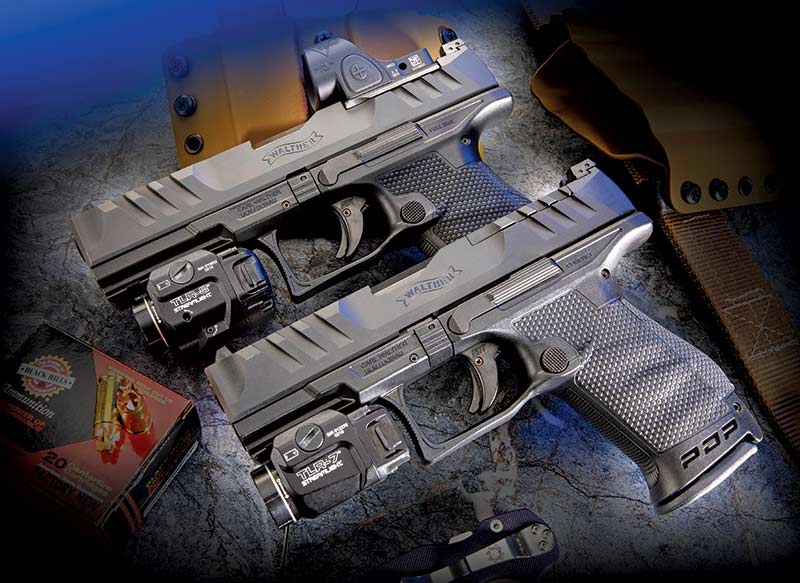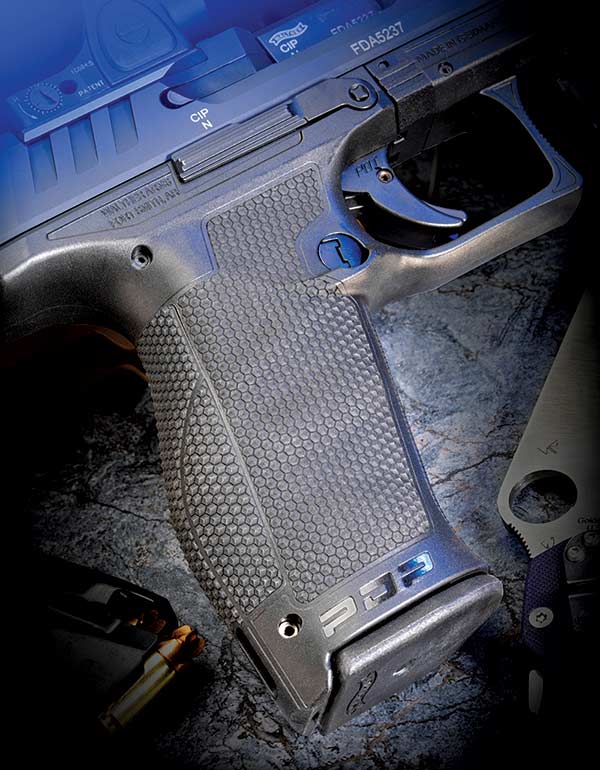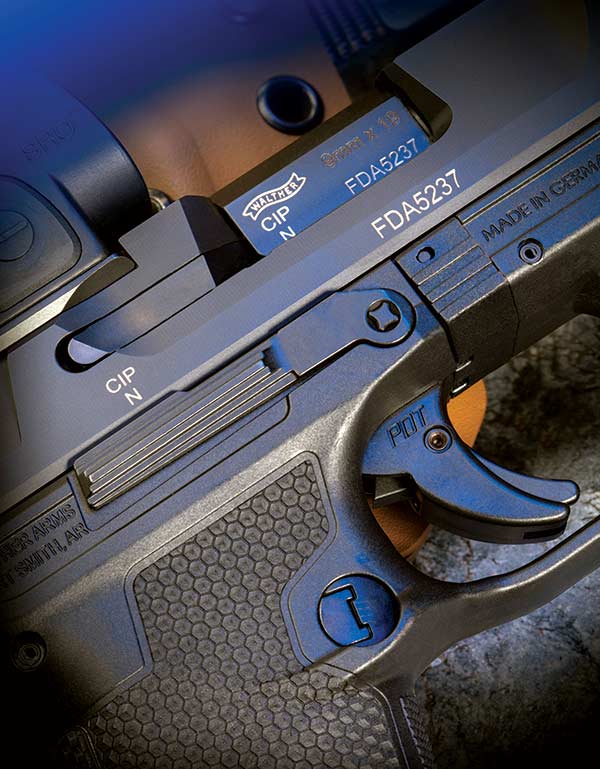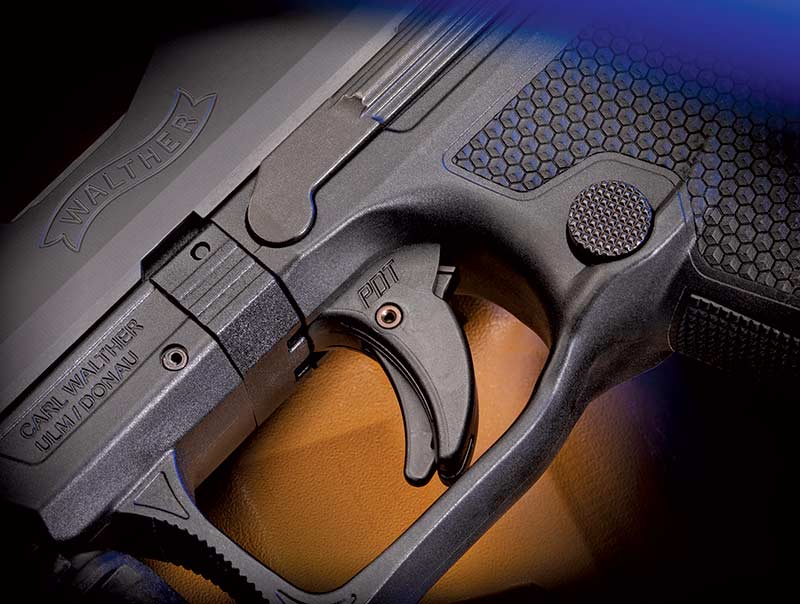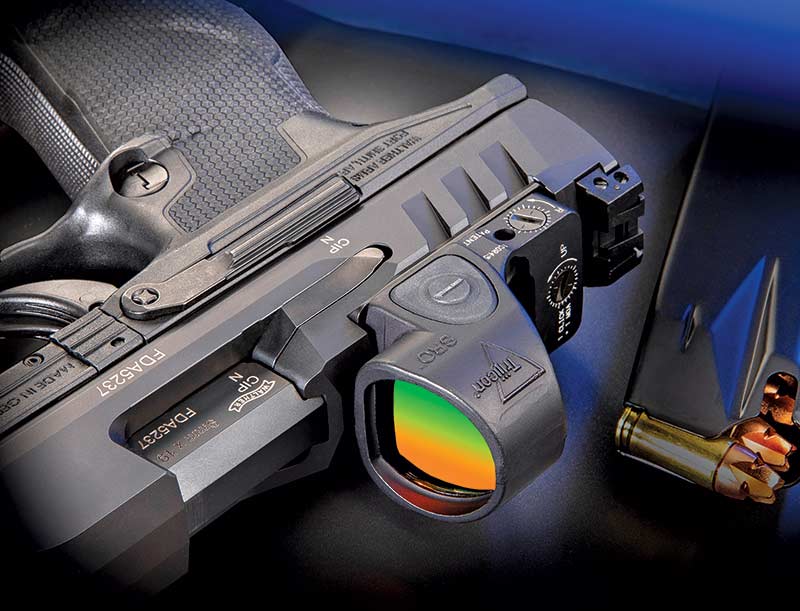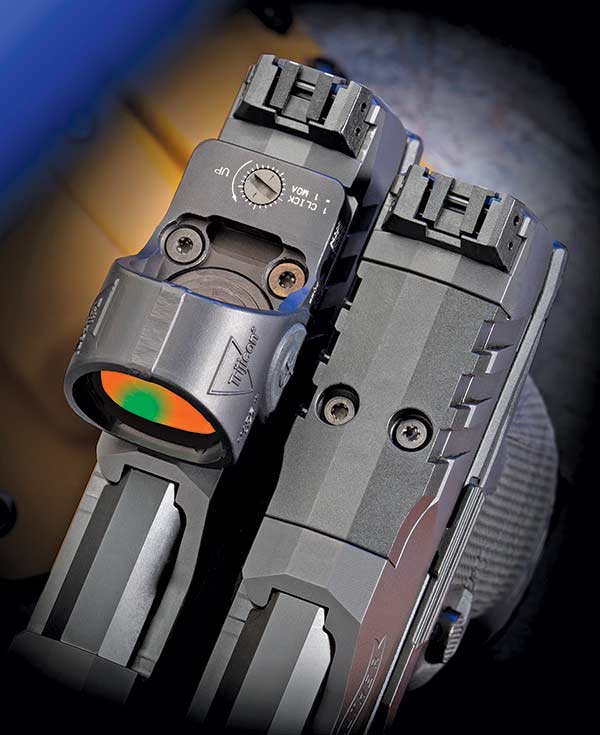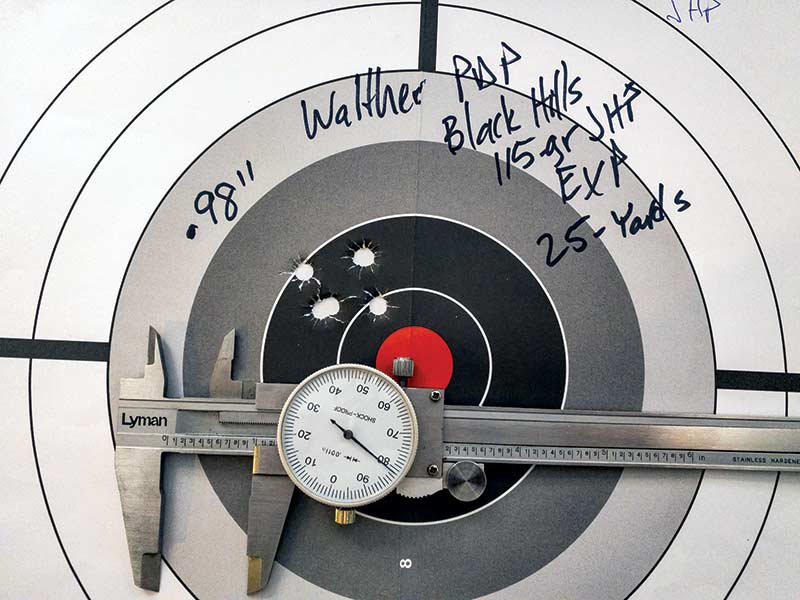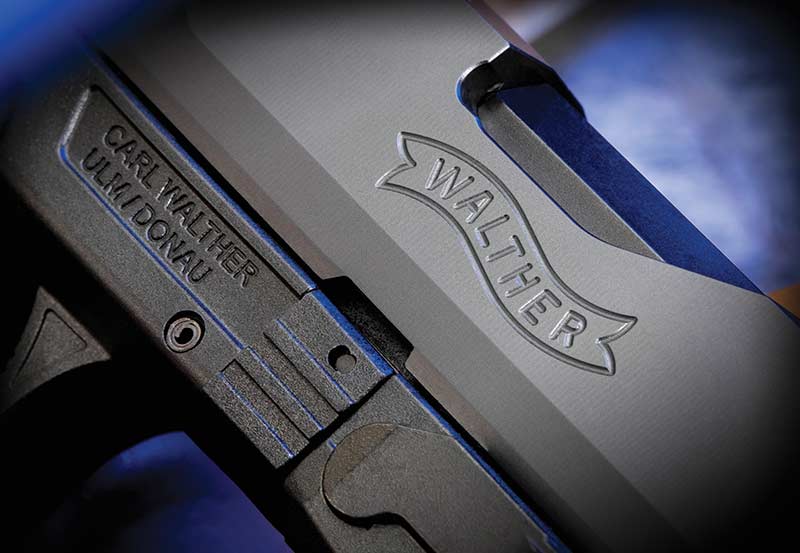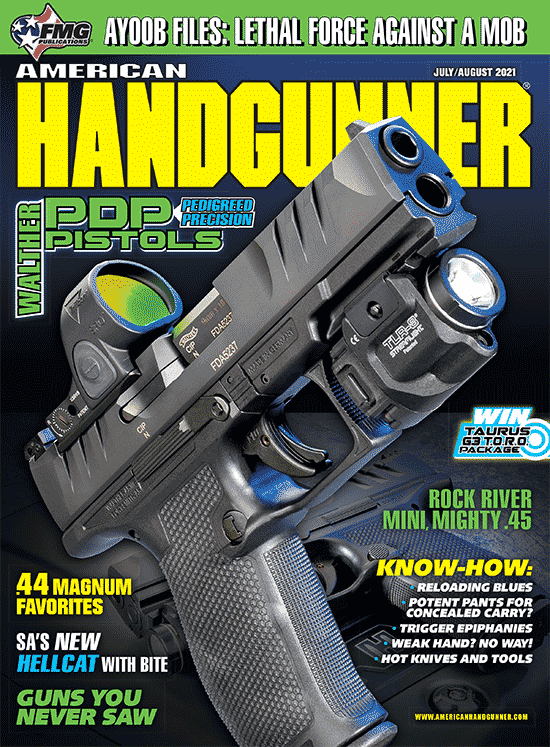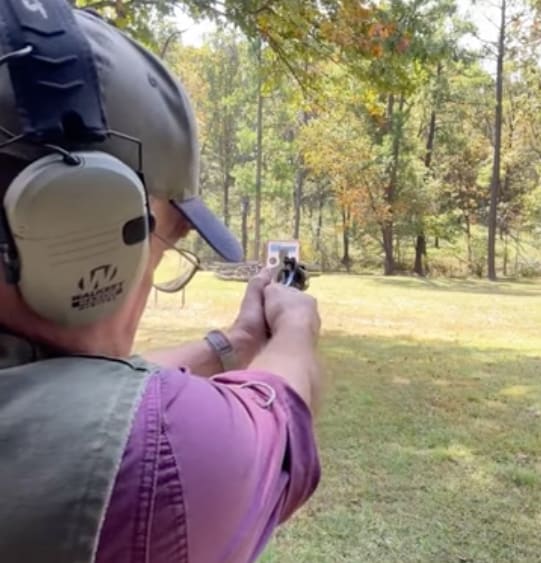Pedigreed Defensive Precision
Walther's New Flagship PDP Pistols
Fritz would be proud. I’m pretty sure Carl would also approve, but I think Fritz might be the one with a soft spot for the new Walther PDP pistols.
Those of us who care about such obscure things like founders of modern gun companies likely have the name Carl Walther burned into our collection of neurons dedicated to firearm trivia. Interestingly, it was Fritz Walther, Carl’s eldest son, who moved the company to expand from their efforts crafting hunting and target rifles to handguns. I suspect Carl didn’t resist Fritz’s desires, as he was married to one Minna Georgine Pickert. She had handguns in her blood as her father, Christian Friedrich Pickert, worked with a nearby revolver manufacturer, Arminius Waffenwerk. It’s never a bad idea to tip your hat to the father-in-law by expressing a sincere interest in his work.
Anyway, under Fritz’s prompting, Carl expanded the company’s efforts into pistols in 1908 with models 1 through 5 and 7 through 9. Most were .25 ACP and .32 ACP pistols. Their efforts stamped a permanent entry in the history books in 1929 and 1931 with introductions of the Walther PP and PPK. These wonderfully elegant pistols are among my all-time favorites, prompting a compulsion to break out my tuxedo every time I pull one from the safe.
Things have changed over the years, and while you can still order new models of the PPK and PPK/S, those icons are no longer carrying the flag as the company’s de facto duty and personal defense pistols. Those duties have now been passed to a brand-new flagship model, the PDP.
All New, All Walther
The new Walther frontman pays homage to the PPQ and Q4/Q5 series pistols but brings new features and design elements to take the line forward another decade or so.
It’s a striker-fired pistol with the expected polymer frame and steel parts up top. If you see one lingering at the cheese buffet across the room, you’ll recognize it as a Walther based on its iconic PPQ-style appearance and attention to ergonomics.
Available initially in two 9mm versions, the full-size model sports a 4.5″ barrel and packs 18 rounds in its steel magazines. The compact model contains a 4.0″ barrel and shorter grip frame accommodating a 15-round magazine. With either packaging, you’ll get two magazines in the box.
Form & Function
Geometry was never my strong suit, but as I recall, mathematicians refer to six-sided shapes as hexagons. The PDP’s side panels and rear grip surface are covered with legions of them, creating a grip pattern Walther calls Performance Duty Texture. It’s wonderfully effective and sticks in the hand without skateboard tape-style abrasion and abuse. The front strap is molded with a more traditional checkering pattern. Under the octagon fields, the terrain rises and falls on the grip sides to create subtle finger “grooves.” To be clear, the front strap is straight — no grooves — it’s just the grip sides having the ever-so-subtle waves. It’s as comfortable as sheepskin-lined moccasins and stable in hand. You’ll get three total grip backstrap panels to adjust grip circumference and trigger reach and all have a nice palm swell shape on the backstrap. Bottom line: This pistol fits the hand like a fine rabbit fur-lined driving glove. All this leads to grip angle and pointing characteristics reminiscent of a 1911.
The cocking serrations are defined by deep, squared-off cuts located front and back. Walther calls it SuperTerrain Serrations. I call it effective.
Rounding out the frame feature set, you’ll find a four-slot rail on the full-size model and a three-slot version on the compact. A steel pin drilled through the base of the grip offers a lanyard attachment point.
To Rack, Or Not To Rack?
Due to the nature of my job, shooting different pistols on any given day, I’ve drifted into a training habit of only using slide lock levers for administrative tasks. I never use them to release the slide when shooting. Instead, I’ve developed a habit of a quick “rack” to release the slide. I do this because pistol manufacturers install slide lock/release levers in different locations determined via a function of Jupiter’s current position in relation to the third Taco Bell to the west of Possum Kingdom, South Carolina. Sometimes the slide lock is closer to the trigger area while on other guns it’s much farther back near the rear of the slide. When shooting different pistols, it’s hard to develop any consistent muscle memory for using this lever as a release. By all means, if you use the same or similar pistols all the time, feel free to get in the habit of using that lever — it’s faster. The “rack” technique is just universal — it will work on any gun with no fumbling to find the lever.
The Walther PDP takes an interesting approach to lever location. Rather than deciding where to put it, the engineers placed it, well, everywhere. The slide lock lever on the PDP is extra-long. It measures a solid 13/4″ from pivot point to end. Not only is the lever easy to reach without alteration of your firing grip, but the length also provides extra leverage, kind of like Archimedes’ famous earth-moving lever and fulcrum. You will have no problem whatsoever using the slide lock lever to chamber a new round. Even if you’re a lefty, the chore is easy as a lever of equal length is located on the right side of the slide.
Let There Be Sights
The PDP uses standard GLOCK-compatible sights. While it might sound strange for a company to choose a sight architecture from a competitor, it’s a customer-centric move. Because there are so many GLOCKs on the market after decades of sales there are dozens of aftermarket GLOCK compatible sights you can choose from. You’ll have no problem finding aftermarket sights.
The included factory sights are standard three-dot variety — with a bonus. The front sight is a post mounting through the slide with a screw accessible from inside — standard GLOCK style. The rear sight is reminiscent of a Novak LMA. It’s adjustable not just for elevation, but windage too. You’ll find two small screws on the right-hand side of the outer sight body that maneuver an inner mechanism containing the squared-out notch. This approach negates any point of aim adjustment disadvantage of the fixed front sight post.
XS tall sights
I fully intended to test a Walther PDP with optic sights, so it seemed appropriate to install a set of tall back up iron sights on this model. I chose the XS Minimalists. As the name implies, the sights are a little simpler and therefore less expensive than the standard XS sights having pricey tritium lamps in both front- and rear-sight bodies.
The XS Minimalist sights have a standard front sight but the tritium insert is surrounded by a bright orange photoluminescent ring. The rear sight is plain — all blacked out with horizontal separations to help minimize glare. It has a standard square notch in the back with slightly rounded corners in the bottom of the square. That’s to help guide your eye higher to the top of the front side so you can more easily align it with the tops of the rear sight to get your elevation dialed in.
The XS tall Minimalist sights measure just about 3/8″ from the top of the frame and co-witness perfectly with a red dot optic in the lower segment of the glass.
Trijicon SRO Red Dot Sight
The Walther PDP is optics ready out of the box and the company will give you a free optic mounting plate of your choice to fit your preferred model of red-dot optic. I chose the standard Trijicon plate as I felt the Trijicon SRO would pair wonderfully with the full-size PDP.
This SRO features a 2.5 MOA red dot in a package that runs for up to three years, so for me, it’s perfect for defensive use at home and for concealed carry. To be ultra-conservative, I’d change the CR2032 battery every New Year’s day through the top-loading compartment. No need to recheck the zero. If you prefer, you can get the SRO with a 1.0 or 5.0 MOA dot size.
Our Special Projects Editor Roy jokingly refers to handgun red dots as “TVs on top of the pistol.” In this case, the SRO is the 80″ wide-screen version you see when walking into Costco. The SRO features a large round housing that translates to a large diameter glass viewing window. The now-tiresome complaint of “I can’t find the dot!” has been banished from all possible relevance with this optic. You cannot miss the dot in this widescreen TV setup. While I describe the SRO as offering a large viewing area, I should be careful to note it’s not so expansive as to prevent concealed carry. Mounted on the PDP compact model, the setup works just fine with normal carry methods.
Ammo Games
Even during these desperate times of ammo drought and despair, I managed to scrounge up enough of three different loads to do proper testing with the Walther PDP.
Black Hills HoneyBadger is quickly becoming one of my favorite defensive loads. The solid-copper bullet resembles a drill bit more than a hollow point, and as the shape hints, it’s not designed to expand. Barriers or no barriers, it will perform the penetration task demanded. From the full-size Walther PDP, I measured average velocity of the light-for-caliber 100-grain projectile using a Competition Electronics Pro Chrono DLX optical chronograph 15 feet from the muzzle. The average velocity of a shot string worked out to 1,287.3 fps. For accuracy testing, I used a Ransom Multi-Caliber Steady Rest set up 25 yards from the target and fired multiple five-shot groups. The HoneyBadger load grouped into an average 1.79″.
I also dove into a supply of Norma MHP (monolithic hollow point) 108-grain ammo. In previous reviews, I’ve found this defensive load to show exceptional accuracy. For defensive use, it’s designed to expand massively when used for home defense and concealed carry applications. Using the same Pro Chrono setup, I measured average velocity of a shot string at 1,220.7 fps. From 25 yards, I fired multiple five-shot groups and observed an average group size of just 1.41″. Nice.
Last up was a more traditional load from Black Hills — their 115-grain JHP EXP offering with its traditional hollow-point design. The finicky nature of Black Hills’ production showed with this offering. Average velocity clocked in at 1,206.7 fps. Accuracy was impressive with an average group size of just 1.27″. Even more impressive was the five-shot group of the day at just 0.98″.
This PDP will shoot. It’s been a while since I’ve tested a production pistol with this kind of repeatable accuracy. Combined with a red dot, it’s easy to put shots on target with satisfying precision.
Closing Arguments
When Carl Walther began his apprenticeship at a small Zella-Mehlis, Germany shop back in 1886, I doubt he foresaw the worldwide success and reach of today’s companies, but given his focus on precision target arms, I suspect he’d be proud of the latest company offering.
I found the PDP to be an impressive pistol all around. Easy to handle, firm in the hand and stunningly accurate for a mass production handgun. With an MSRP of $649, you’re getting a heck of a pistol for the money.
For more info: WaltherArms.com

